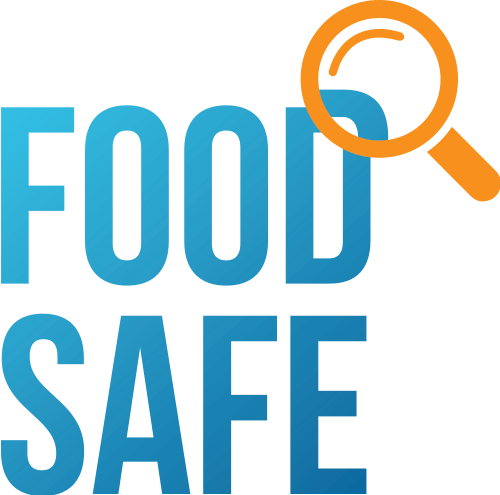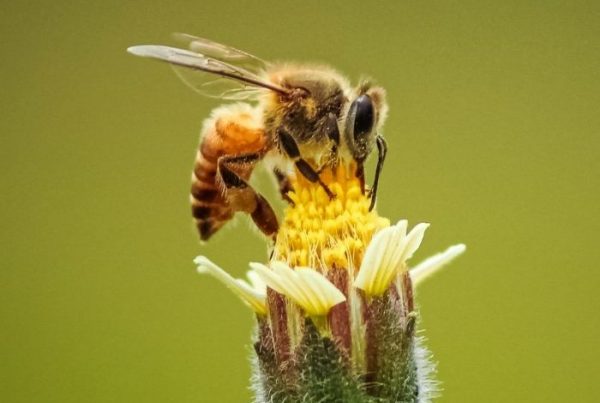Understanding colour differences of meat

Often an attractive, bright colour is a consideration for the purchase. So, why are there differences in colour and what do they mean? Listed below are some questions and answers to help you understand the colour differences.
What factors affect the colour of meat and poultry?
Myoglobin, a protein, is responsible for the majority of the red colour. Myoglobin doesn’t circulate in the blood but is fixed in the tissue cells and is purplish in colour. When it is mixed with oxygen, it becomes oxymyoglobin and produces a bright red colour. The remaining colour comes from the haemoglobin, which occurs, mainly in the circulating blood, but a small amount can be found in the tissues after slaughter.
Colour is also influenced by the age of the animal, the species, sex, diet, and even the exercise it gets. The meat from older animals will be darker in colour because the myoglobin level increases with age. Exercised muscles are always darker in colour, which means the same animal can have variations of colour in its muscles. In addition, the colour of meat and poultry can change as it is being stored at retail and in the home (see explanation in question 5). When safely stored in the refrigerator or freezer, colour changes are normal for fresh meat and poultry.
Does a change in colour indicate spoilage?
Change in colour alone does not mean the product is spoiled. Colour changes are normal for fresh product. With spoilage, there can be a change in colour — often a fading or darkening. In addition to the colour change, the meat or poultry will have an off odour, be sticky or tacky to the touch, or it may be slimy. If the meat has developed these characteristics, it should not be used.
If the colour of meat and poultry changes while frozen, is it safe?
Colour changes, while meat and poultry are frozen, occur just as they do in the refrigerator. Fading and darkening, for example, do not affect their safety. These changes are minimised by using freezer-type wrapping and by expelling as much air as possible from the package.
What are the white dried patches on frozen meat and poultry?
The white dried patches indicate freezer burn. When meat and poultry have been frozen for an extended period of time or have not been wrapped and sealed properly, this will occur. The product remains safe to eat, but the areas with freezer burn will be dried out and tasteless and can be trimmed away if desired.
When displayed at the grocery store, why is some meat bright red and other meat very dark in colour?
The optimum surface colour of fresh meat (i.e., cherry-red for beef; dark cherry-red for lamb; greyish-pink for pork; and pale pink for veal) is highly unstable and short-lived. When the meat is fresh and protected from contact with air (such as in vacuum packages), it has the purple-red colour that comes from myoglobin, one of the two key pigments responsible for the colour of meat. When exposed to air, myoglobin forms the pigment, oxymyoglobin, which gives the meat a pleasingly cherry-red colour. The use of a plastic wrap that allows oxygen to pass through it helps ensure that the cut meats will retain this bright red colour. However, exposure to store lighting as well as the continued contact of myoglobin and oxymyoglobin with oxygen leads to the formation of metmyoglobin, a pigment that turns meat brownish-red. This colour change alone does not mean the product is spoiled (see explanation in question 2).
Why is pre-packaged ground beef red on the outside and sometimes greyish-brown on the inside?
These colour differences do not indicate that the meat is spoiled or old. As discussed earlier, fresh-cut meat is purplish in colour. Oxygen from the air reacts with meat pigments to form a bright red colour which is usually seen on the surface of ground beef purchased in the supermarket. The interior of the meat may be greyish-brown due to the lack of oxygen penetrating below the surface.
A beef roast has darkened in the refrigerator, is it safe?
Yes, it is safe. The darkening is due to oxidation, the chemical changes in myoglobin due to the oxygen content. This is a normal change during refrigerator storage.
Can cooked ground beef still be pink inside?
Yes, ground beef can be pink inside after it is safely cooked. The pink colour can be due to a reaction between the oven heat and myoglobin, which causes a red or pink colour. It can also occur when vegetables containing nitrites are cooked along with the meat. Because food safety cannot be judged by colour, it is very important to use a food thermometer when cooking ground beef. To be sure all harmful bacteria are destroyed, cook raw ground beef to an internal temperature of 71.11 °C (160 °F) as measured with a food thermometer.
What causes iridescent colours on meats?
Meat contains iron, fat, and other compounds. When light hits a slice of meat, it splits into colours like a rainbow. There are various pigments in meat compounds that can give it an iridescent or greenish cast when exposed to heat and processing. Wrapping the meat in airtight packages and storing it away from light will help prevent this situation. Iridescence does not represent decreased quality or safety of the meat.
What causes greyish or green colour on cured meats?
Exposure to light and oxygen causes oxidation to take place, which causes the breaking down of colour pigments formed during the curing process. Chemicals in the cure and oxygen, as well as energy from ultraviolet and visible light, contribute to both the chemical breakdown and microbial spoilage of the product. Cure, such as nitrite, chemically changes the colour of muscle. Curing solutions are coloured in order to distinguish them from other ingredients (such as sugar or salt) used in fresh and cured meat products. For example, cured raw pork is grey, but cured cooked pork (e.g. ham) is light pink.
What is the usual colour of raw poultry?
Raw poultry can vary from a bluish-white to yellow. All of these colours are normal and are a direct result of the breed, exercise, age, and/or diet. Younger poultry has less fat under the skin, which can cause the bluish cast, and the yellow skin could be a result of marigolds in the feed.
What causes the differences in colour of raw ground poultry?
Ground poultry varies in colour according to the part being ground. Darker pink means more dark meat was used and a lighter pink means more white meat was included (or skin was included). Ground poultry can contain only muscle meat and skin with attached fat in proportion to the whole bird.
What causes dark bones in cooked poultry?
Darkening of bones and meat around the bones occurs primarily in young (6-8 weeks) broiler-fryer chickens. Since the bones have not calcified or hardened completely, pigment from the bone marrow seeps through the bones and into the surrounding area. Freezing can also contribute to this darkening. This is an aesthetic issue and not a safety one. The meat is safe to eat when all parts have reached a safe minimum internal temperature of 73.89 °C (165 °F) as measured with a food thermometer.
What colour is safely cooked poultry?
Safely cooked poultry can vary in colour from white to pink to tan. For safety when cooking poultry, use a food thermometer to check the internal temperature. For a whole chicken or turkey, check the internal temperature in the innermost part of the thigh and wing and the thickest part of the breast. All the meat, including any that remains pink, is safe to eat as soon as all parts reach at least 73.89 °C (165 °F) as measured with a food thermometer.
Why is some cooked poultry pink?
Chemical changes occur during cooking. Oven gases in a heated gas or electric oven react chemically with haemoglobin in the meat tissues to give it a pink tinge. Often meat of younger birds shows the pinkest because their thinner skins permit oven gases to reach the flesh. Older animals have a fat layer under their skin, giving the flesh added protection from the gases. Older poultry may be pink in spots where fat is absent from the skin. Also, nitrates and nitrites, which are often used as preservatives or may occur naturally in the feed or water supply used can cause a pink colour.
If fully cooked smoked poultry is pink, is it safe?
Poultry grilled or smoked outdoors can be pink, even when all parts have attained temperatures well above 73.89 °C (165 °F) as measured with a food thermometer. There may be a pink-coloured rim about one-half inch wide around the outside of the cooked product. Commercially prepared, smoked poultry is usually pink because it is prepared with natural smoke and liquid smoke flavour.
Source: United States Department of Agriculture Food Safety and Inspection Service (FSIS)





